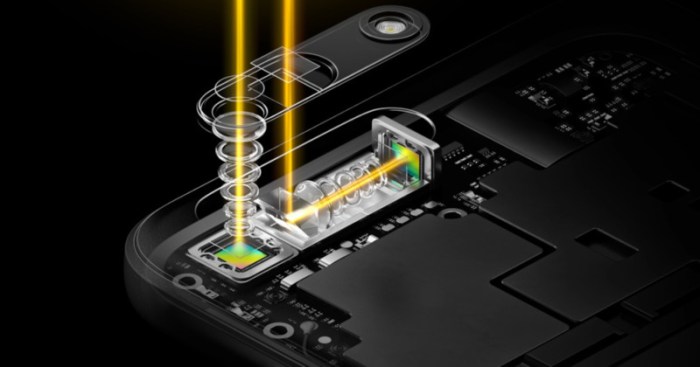How does optical zoom in smartphones actually work? This question delves into the fascinating world of miniature optics and digital image processing. Understanding how smartphones achieve magnification without sacrificing image quality requires exploring the interplay of lenses, sensors, and sophisticated algorithms. This exploration will reveal the intricacies of optical zoom, from the fundamental principles of lens physics to the cutting-edge technologies driving its continuous improvement.
We’ll examine the different types of lenses used, the mechanical mechanisms that allow for zooming, and the crucial role of the image sensor. We will also compare optical zoom to its digital counterpart, highlighting the strengths and limitations of each approach. Finally, we’ll look at hybrid zoom technologies and future trends, painting a picture of the ongoing evolution of smartphone camera technology.
Understanding the Basics of Optical Zoom
Optical zoom in smartphones leverages the power of lenses to magnify a subject, bringing distant objects closer without sacrificing image quality. Unlike digital zoom, which simply enlarges pixels, optical zoom uses a physical mechanism to achieve magnification, resulting in sharper and more detailed images. This process fundamentally alters the light path before it reaches the sensor, providing a true increase in magnification.
Optical zoom works by using a system of multiple lenses that move relative to each other. The most common type is a periscope-style system, which uses prisms to bend the light path and allow for a longer focal length within a compact device. As you zoom, these lenses adjust their position, changing the focal length and thus the magnification. This allows for a seamless zoom transition, maintaining focus and image clarity.
Optical Zoom versus Digital Zoom
The key difference between optical and digital zoom lies in how they achieve magnification. Optical zoom uses physical lenses to magnify the image, while digital zoom digitally enlarges the image by cropping and interpolating pixels from the sensor. This interpolation process, where the camera software attempts to “guess” the missing pixel data, inevitably leads to a loss of detail and image quality.
Optical zoom provides a much clearer, sharper image, retaining fine details and minimizing artifacts. In contrast, digital zoom often results in a blurry, pixelated image, especially at higher zoom levels. The difference becomes dramatically apparent when comparing images taken at the maximum zoom of both systems. An image captured using optical zoom will maintain a high level of detail and sharpness, whereas a digitally zoomed image will be noticeably grainy and lacking in clarity. For example, imagine trying to capture a detailed shot of a bird in a distant tree. Optical zoom would provide a clear image showing the bird’s feathers and features, while digital zoom would only provide a blurry, pixelated representation.
Comparison of Optical and Digital Zoom
The following table summarizes the advantages and disadvantages of each zoom type:
| Feature | Optical Zoom | Digital Zoom |
|---|---|---|
| Image Quality | High resolution, sharp, detailed | Lower resolution, blurry, pixelated at higher zoom levels |
| Magnification | True magnification, physically altering the light path | Enlarges existing pixels, no actual increase in light gathering |
| Mechanism | Moving lens system | Software-based interpolation |
| Size and Cost | More complex, often larger and more expensive | Simple to implement, less costly |
The Role of Lenses in Smartphone Optical Zoom
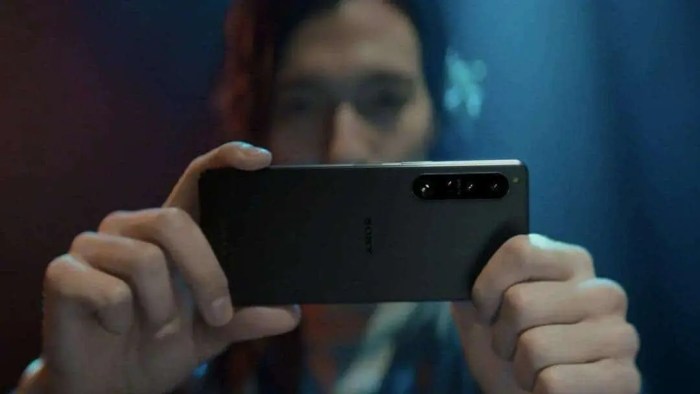
Smartphone optical zoom relies on a sophisticated system of lenses working in concert to magnify distant objects. Unlike digital zoom, which simply enlarges the image sensor’s pixels, optical zoom uses physical lenses to gather more light and increase the image’s magnification. This results in a higher-quality image with less distortion and noise, especially at higher zoom levels. The key components are the various lenses themselves, their arrangement, and the interplay of their focal lengths.
Types of Lenses in Smartphone Optical Zoom Systems
Optical zoom in smartphones typically involves at least two lenses: a wide-angle lens for standard shots and a telephoto lens for zoomed-in views. The telephoto lens has a longer focal length than the wide-angle lens, allowing it to capture a narrower field of view but with significantly greater magnification. Some high-end smartphones incorporate additional lenses, such as periscope lenses, to achieve even greater zoom capabilities. Periscope lenses use prisms to bend the light path, allowing for a longer focal length within a more compact phone body.
Interaction of Multiple Lenses for Different Zoom Levels
Achieving various zoom levels involves a coordinated movement of the lenses within the optical system. A simple system might involve a single telephoto lens that moves closer or further from the image sensor. More advanced systems utilize multiple lenses that move relative to each other, allowing for smoother zoom transitions and improved image quality across the zoom range. This complex interplay of lens movement is controlled by sophisticated algorithms that compensate for distortions and maintain focus. For instance, a system might use a wide-angle lens for standard shots, a telephoto lens for moderate zoom, and a periscope lens for extreme magnification. The smartphone’s processor selects the appropriate lens and adjusts its position to deliver the desired magnification.
Focal Length and Magnification
Focal length is a crucial parameter determining the magnification of a lens. It’s the distance between the lens’s optical center and the image sensor when the lens is focused at infinity. A longer focal length results in greater magnification and a narrower field of view. A shorter focal length produces a wider field of view with less magnification. For example, a 28mm lens (wide-angle) will capture a much broader scene than a 100mm lens (telephoto). The relationship between focal length and magnification is not linear, but rather influenced by the lens design and the sensor size. Higher magnification often requires longer focal lengths, impacting the physical size and complexity of the optical system.
Diagram of Light Path Through a Multi-Lens Optical Zoom System
The diagram illustrates a simplified multi-lens system. Light from a distant object first passes through the wide-angle lens, then the telephoto lens, and finally, the periscope lens before reaching the image sensor. Each lens bends the light, contributing to the overall magnification. The lenses are shown in their positions for maximum optical zoom. The actual movement of the lenses during zooming is more complex.
Image Sensor and its Influence on Optical Zoom
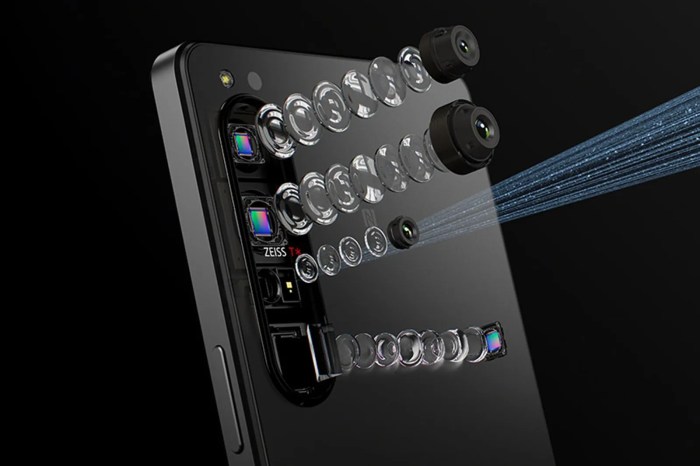
The image sensor is the crucial component that captures the light gathered by the lens system in a smartphone. Its size and technology significantly impact the quality of optically zoomed images. A larger sensor generally leads to better image quality at higher zoom levels, while pixel binning and the sensor technology itself play supporting roles in achieving optimal results.
The Role of Image Sensor Size in Optical Zoom Quality
A larger image sensor provides several advantages. Firstly, larger sensors possess larger photodiodes (light-sensitive units). These larger photodiodes can gather more light, resulting in brighter images, especially crucial in low-light conditions or when using higher zoom levels, which inherently reduce the amount of light reaching the sensor. Secondly, larger sensors allow for better detail capture and dynamic range. This means the zoomed image will have more detail and a wider range of tones from the darkest shadows to the brightest highlights. Conversely, smaller sensors struggle to capture sufficient light and detail at higher zoom magnifications, often resulting in grainy, noisy images lacking sharpness. The effective increase in pixel size on a larger sensor also contributes to a reduced noise level in low light situations. Think of it like this: a larger bucket (sensor) collects more rain (light) than a smaller one.
Pixel Binning Techniques and Optical Zoom
Pixel binning is a technique used to improve low-light performance and reduce noise in zoomed images. Instead of using each pixel individually, the sensor combines the data from multiple adjacent pixels into a single larger “super-pixel.” This effectively increases the size of each pixel, leading to better light gathering and reduced noise. For example, a 48MP sensor might use 4×4 pixel binning to create a 12MP image with larger, more light-sensitive pixels. The result is a less noisy, more detailed image, even at higher zoom levels where light is limited. This trade-off of resolution for improved low-light performance is often beneficial for optical zoom.
Comparison of CMOS and CCD Image Sensor Technologies in Optical Zoom
While CCD sensors were prevalent in the past, CMOS (Complementary Metal-Oxide-Semiconductor) sensors are now the dominant technology in smartphones. CMOS sensors offer several advantages over CCDs, including lower power consumption, on-chip processing capabilities, and faster read speeds. These advantages translate to better performance in optical zoom applications. The faster read speeds are especially important for capturing sharp images quickly, minimizing the impact of camera shake during zoom. Although both technologies can be used in optical zoom systems, CMOS sensors’ inherent advantages make them better suited for the demanding requirements of smartphone cameras.
Impact of Sensor Size on Low-Light Performance During Optical Zoom
The impact of sensor size on low-light performance during optical zoom is substantial. As mentioned earlier, larger sensors collect more light, leading to brighter images with less noise. This is especially critical at higher zoom levels, where the amount of light reaching the sensor is already significantly reduced. Consider a scenario: two phones, one with a 1/1.7″ sensor and another with a 1/2.3″ sensor, both using a 3x optical zoom. The phone with the larger sensor (1/1.7″) will produce a significantly brighter and less noisy zoomed image in low light compared to the phone with the smaller sensor (1/2.3″). The larger sensor’s ability to gather more photons (light particles) directly translates to improved image quality in challenging lighting conditions.
Limitations of Optical Zoom in Smartphones
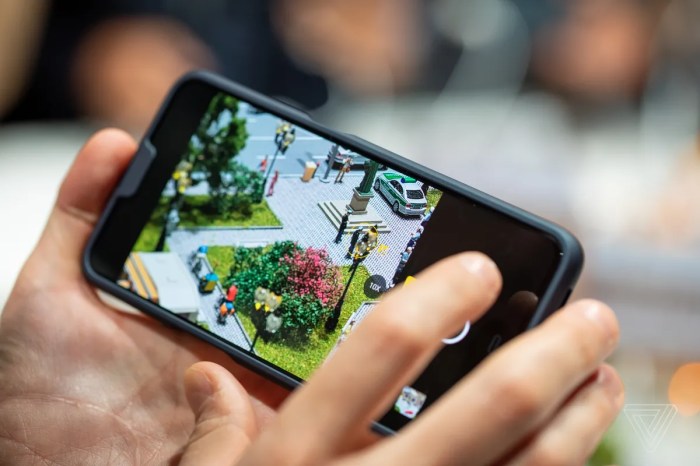
Smartphone optical zoom, while offering a significant improvement over digital zoom, faces inherent physical limitations that restrict its capabilities. These limitations stem from the constraints of miniaturizing complex lens systems within the confines of a portable device and balancing performance with size and cost. Understanding these limitations is crucial for appreciating the trade-offs involved in achieving higher zoom ratios in smartphones.
Physical Size Constraints
The maximum optical zoom achievable in a smartphone is fundamentally limited by the physical size of the lens system. To achieve higher magnification, you need longer focal length lenses, which inherently require more physical space. Cramming a long focal length lens into a slim smartphone is a significant engineering challenge. Increasing the lens length proportionally increases the size and thickness of the phone, impacting portability and user experience. For instance, a periscope lens system, while enabling higher zoom ratios, adds considerable bulk to the phone compared to a standard lens. This size increase is often a compromise that manufacturers must carefully balance against consumer preferences for slim and lightweight devices.
Trade-offs Between Zoom Range, Image Quality, and Phone Size
Increasing the optical zoom range often necessitates compromises in other areas. Higher zoom levels usually mean more complex lens systems with more lenses and elements, which can introduce more aberrations (distortions) and reduce image sharpness. This is further exacerbated by the challenges of maintaining consistent image quality across the entire zoom range. Moreover, as mentioned previously, higher zoom ratios typically translate to larger and thicker phones. Manufacturers are constantly trying to find the optimal balance between these competing factors, often resulting in specific design choices that prioritize one aspect over others depending on the target market and pricing. For example, a high-end flagship phone might prioritize higher zoom capabilities, even if it means a slightly larger form factor, while a budget-friendly model may sacrifice zoom range to maintain a compact design.
Maintaining Image Sharpness and Clarity at High Zoom Levels, How does optical zoom in smartphones actually work
Achieving sharp and clear images at high zoom levels is particularly challenging. At higher magnifications, even minor imperfections in the lens system, such as lens aberrations or imperfections in manufacturing, are amplified, resulting in noticeable image degradation. Furthermore, image stabilization becomes increasingly critical at higher zoom levels, as any slight movement of the phone can lead to blurry images. While sophisticated image stabilization technologies are employed, they can only compensate to a certain extent. The impact of light levels also becomes more pronounced at higher zoom levels; the smaller aperture often required for high zoom necessitates longer exposure times, which increases the risk of motion blur.
Summary of Limitations
| Limitation | Description | Impact | Mitigation Strategies |
|---|---|---|---|
| Physical Size | Longer focal length lenses required for higher zoom necessitate larger phone dimensions. | Increased phone thickness and weight, impacting portability. | Periscope lens systems, but these still add bulk. |
| Image Quality | Increased lens complexity can introduce aberrations and reduce sharpness at high zoom levels. | Blurred or distorted images, especially at the edges of the frame. | Advanced lens designs, image processing algorithms. |
| Light Sensitivity | Smaller apertures at higher zoom levels require longer exposure times, increasing susceptibility to motion blur. | Blurred images, particularly in low-light conditions. | Optical image stabilization (OIS), computational photography techniques. |
| Cost | Higher zoom capabilities require more sophisticated lens systems and manufacturing processes, increasing production costs. | Higher phone prices. | Trade-offs in other features, targeting specific market segments. |
Hybrid Zoom Technology: How Does Optical Zoom In Smartphones Actually Work
Hybrid zoom represents a clever compromise in smartphone camera technology, aiming to deliver higher magnification than pure optical zoom while mitigating the drawbacks of purely digital zoom. It achieves this by combining the strengths of both approaches, leveraging optical zoom for the base magnification and then employing digital zoom and sophisticated algorithms to further increase the magnification level.
Hybrid zoom systems typically use optical zoom to reach a certain magnification level (e.g., 2x or 3x optical zoom). Beyond that point, digital zoom takes over. However, unlike simple digital zoom which often results in a significant loss of image quality, hybrid zoom incorporates advanced image processing techniques to significantly improve the resulting image. These techniques are crucial for maintaining acceptable detail and sharpness at higher magnification levels.
Image Enhancement Algorithms in Hybrid Zoom
The effectiveness of hybrid zoom hinges heavily on the sophistication of the algorithms used to process the digitally zoomed portion of the image. These algorithms aim to minimize the artifacts typically associated with digital zoom, such as pixelation and loss of detail. Common techniques include super-resolution algorithms, which attempt to reconstruct higher-resolution images from lower-resolution input. These algorithms analyze the image data and intelligently fill in missing details based on patterns and neighboring pixels. Other techniques involve noise reduction and sharpening algorithms to improve the overall image quality and clarity. For example, a sophisticated algorithm might detect edges and textures in the image and use this information to reconstruct finer details that would otherwise be lost during digital magnification. Another example would be algorithms that reduce the appearance of noise (random variations in pixel brightness) which is amplified when digitally zooming.
Optical Zoom vs. Hybrid Zoom Image Quality Comparison
At lower magnification levels (within the range of the optical zoom), pure optical zoom consistently delivers superior image quality compared to hybrid zoom. The images are sharper, have better detail, and exhibit less noise. However, as magnification increases beyond the optical zoom’s capabilities, hybrid zoom becomes necessary. The image quality of hybrid zoom at these higher magnification levels is generally better than that of pure digital zoom but will still show a noticeable degradation compared to pure optical zoom at lower magnifications. For instance, a smartphone with 3x optical zoom and 30x hybrid zoom will provide superior image quality at 3x magnification using optical zoom. However, at 10x or 30x magnification, the hybrid zoom, despite its degradation compared to the 3x optical, will still produce a better image than a purely digitally zoomed image at the same magnification. The difference in quality is usually noticeable but may be acceptable depending on the user’s needs and tolerance.
Advantages and Disadvantages of Hybrid Zoom
Hybrid zoom offers a practical balance between optical and digital zoom capabilities. The key advantage is the ability to achieve higher magnification levels than what’s possible with optical zoom alone, while still maintaining relatively acceptable image quality. This expands the versatility of the smartphone camera, allowing users to capture subjects that are far away with a degree of detail that would be impossible with pure digital zoom. However, a significant disadvantage is that the image quality will inevitably be inferior to pure optical zoom at higher magnification levels. The level of degradation varies depending on the quality of the algorithms and the overall camera system. Another potential drawback is the increased computational power required for the image processing algorithms, which might impact battery life.
Future Trends in Smartphone Optical Zoom
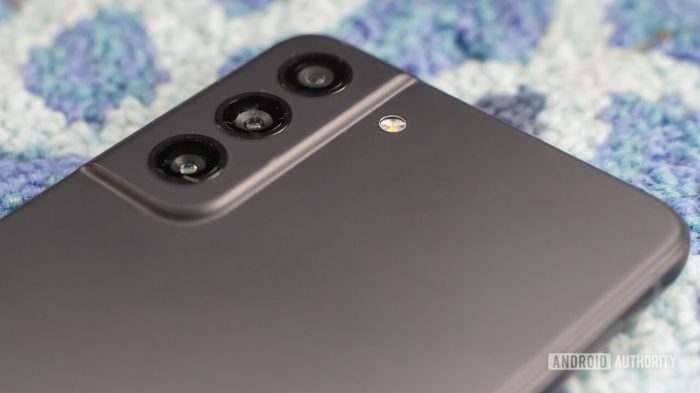
The pursuit of ever-improving smartphone camera capabilities continues to drive innovation in optical zoom technology. Miniaturization, computational photography, and advancements in materials science are converging to overcome current limitations and deliver significantly enhanced zoom performance in the coming years. We can expect to see a rapid evolution in both the hardware and software aspects of smartphone cameras, leading to more versatile and powerful zoom capabilities for everyday users.
Several emerging technologies hold the key to unlocking significant improvements in smartphone optical zoom. These advancements will likely focus on overcoming the inherent challenges of fitting powerful optical systems into increasingly compact devices while simultaneously maintaining image quality and speed.
You also can investigate more thoroughly about software for processing 3D scans from phone cameras to enhance your awareness in the field of software for processing 3D scans from phone cameras.
Periscope Lens System Refinements
Current periscope lens systems, which use prisms to bend the light path, represent a significant step forward in optical zoom. However, there’s considerable room for improvement. Future iterations might incorporate more advanced prism designs to minimize light loss and aberrations, leading to brighter images at higher zoom levels. The use of aspherical lenses, which have non-spherical surfaces, can further reduce distortion and improve image sharpness across the zoom range. Additionally, improved anti-reflective coatings will minimize light scattering, leading to enhanced clarity and contrast. For example, companies like Oppo have already demonstrated impressive periscope zoom capabilities, showcasing the potential of this technology. Further miniaturization of these complex systems is also crucial for integrating them into thinner and lighter smartphones.
Advancements in Liquid Lenses
Liquid lenses offer a promising alternative to traditional solid lenses. These lenses utilize a controllable liquid interface to adjust the focal length, enabling rapid and precise autofocus and zoom. The flexibility of liquid lenses allows for smaller and more compact zoom systems compared to traditional mechanical systems. While still in the early stages of development for widespread smartphone integration, the potential for smoother zoom transitions and improved image stabilization is significant. Imagine a smartphone camera that instantly and seamlessly adjusts focus and zoom without any mechanical movement. This is the promise of liquid lens technology.
Computational Photography Enhancements
Computational photography plays a crucial role in enhancing zoom capabilities beyond the purely optical. Advancements in algorithms, particularly in areas like super-resolution and multi-frame processing, can significantly improve the quality of zoomed images. Techniques such as AI-powered noise reduction and artifact removal can compensate for limitations in the optical system, producing cleaner and more detailed images even at high zoom levels. For example, the ability to combine multiple images captured at slightly different positions to create a higher-resolution image is already being employed, demonstrating the power of computational photography in overcoming hardware limitations. Future advancements will likely focus on improving the realism and naturalness of computationally enhanced zoom images.
Challenges in Achieving Superior Optical Zoom
Despite the promising advancements, several challenges remain. Miniaturizing high-quality optical components without compromising image quality remains a significant hurdle. The trade-off between zoom range, aperture size, and image quality is another critical consideration. Balancing these competing factors requires innovative lens designs and manufacturing processes. Furthermore, maintaining image stability at higher zoom levels is crucial; any slight movement will be amplified at longer focal lengths. Developing effective image stabilization systems that are both compact and efficient is a key area of ongoing research.
Optical Zoom vs. Digital Zoom
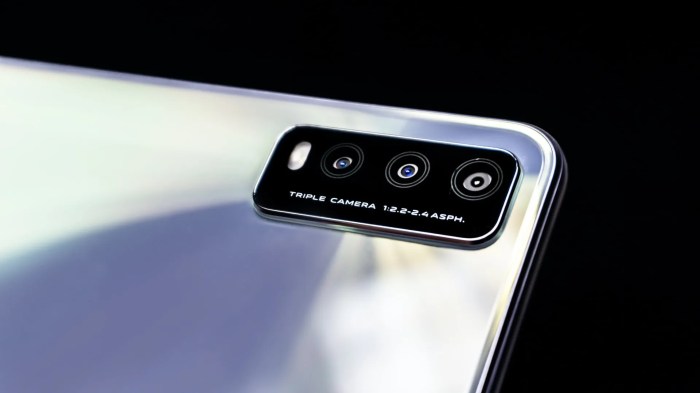
Optical and digital zoom represent two distinct approaches to magnifying subjects in photography, each with its own strengths and weaknesses. Understanding their differences is crucial for capturing high-quality images with smartphones. This comparison will highlight the key distinctions in image quality, file size, and ideal usage scenarios.
Image Quality Comparison
Optical zoom uses physical lenses to magnify the subject, resulting in a sharper, higher-resolution image with less distortion, especially at higher magnification levels. Digital zoom, conversely, enlarges a portion of the existing image sensor data through digital processing. This leads to a significant loss of detail and an increase in image noise and artifacts, particularly noticeable at higher zoom levels. The difference is analogous to enlarging a photograph: an optical zoom is like using a high-resolution enlarger, while digital zoom is like enlarging a low-resolution image on a computer – detail is lost. At lower magnification levels, digital zoom may appear acceptable, but the quality degrades rapidly as magnification increases.
File Size Differences
Images captured using optical zoom generally maintain a larger file size compared to those captured with digital zoom at the same magnification level. This is because optical zoom captures more raw image data, resulting in a higher resolution image. Digital zoom, on the other hand, essentially crops and enlarges the existing image data, thus reducing the overall resolution and consequently the file size. The difference in file size reflects the difference in image detail. A 10x optical zoom image will likely be significantly larger than a 10x digital zoom image of the same scene, due to the increased resolution and detail in the optical zoom image.
Situational Preferences
Optical zoom is preferred when high image quality is paramount, such as in professional photography or situations requiring detailed images. For example, capturing wildlife photography from a distance or taking close-up shots of distant landmarks would significantly benefit from optical zoom’s superior detail and clarity. Digital zoom, however, might suffice in casual photography where image quality is less critical, such as quickly enlarging a portion of a scene to share on social media. It’s particularly useful in situations where an optical zoom is unavailable or insufficient.
Key Differences Summarized
| Feature | Optical Zoom | Digital Zoom |
|---|---|---|
| Magnification Method | Uses physical lenses to magnify the image | Enlarges a portion of the existing image digitally |
| Image Quality | Maintains high resolution and detail; minimal distortion | Reduces resolution and detail; increased noise and artifacts |
| File Size | Larger file size due to higher resolution | Smaller file size due to lower resolution |
| Best Use Cases | Professional photography, situations requiring high detail | Casual photography, quick enlargements, when optical zoom is unavailable |
The Impact of Aperture on Optical Zoom Performance
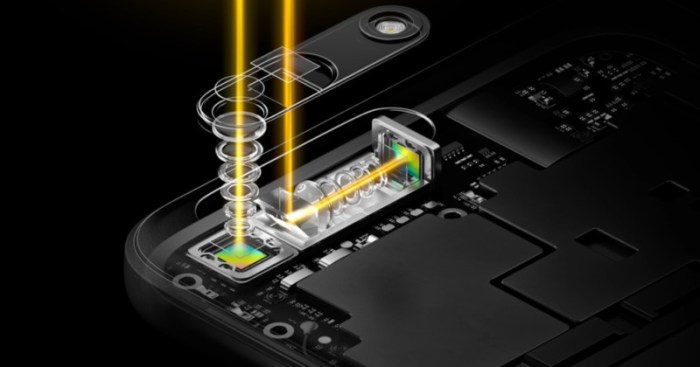
Aperture size plays a crucial role in determining the quality and characteristics of images, especially when optical zoom is involved. A larger aperture allows more light to reach the image sensor, impacting both brightness and depth of field at various zoom levels. Understanding this relationship is key to appreciating the complexities of smartphone camera design and the limitations inherent in achieving high-quality zoomed images.
The aperture, typically represented as an f-number (e.g., f/1.8, f/2.8), directly influences the amount of light entering the camera lens. A smaller f-number (e.g., f/1.8) indicates a larger aperture, allowing more light to hit the sensor. This results in brighter images, particularly beneficial in low-light conditions or when using higher zoom levels, which often reduce light intake. Conversely, a larger f-number (e.g., f/2.8) signifies a smaller aperture, leading to darker images. The aperture also affects depth of field: a larger aperture produces a shallower depth of field (blurred background), while a smaller aperture yields a greater depth of field (sharper background). This effect is more pronounced at higher zoom levels because the effective focal length increases, making the depth of field even shallower with a large aperture.
Aperture and Image Quality in Zoomed Images
At higher zoom levels, the impact of aperture on image quality becomes more significant. A larger aperture generally improves image quality by allowing more light to reach the sensor, reducing the need for high ISO settings (which can introduce noise). This is especially important in optical zoom, where light gathering is already reduced compared to the wide-angle setting. However, achieving a large aperture in a zoom lens is challenging due to design complexities. A smaller aperture, on the other hand, can lead to a loss of detail and sharpness, particularly at the edges of the frame, due to diffraction effects. Diffraction, the bending of light waves as they pass through an aperture, becomes more pronounced as the aperture shrinks.
Challenges in Designing Lenses with Large Apertures for Smartphone Optical Zoom
Designing lenses with large apertures for smartphone optical zoom systems presents significant engineering challenges. The physical constraints of a compact smartphone body limit the size and complexity of the lens system. Achieving a large aperture while maintaining a compact design requires sophisticated lens elements with intricate curves and precise manufacturing tolerances. Furthermore, maintaining image quality across the entire zoom range with a large aperture is difficult; aberrations and distortions can become more pronounced. The cost of manufacturing such advanced lenses is also significantly higher.
Examples of Different Aperture Sizes on Zoomed Images
In conclusion, understanding how optical zoom in smartphones works reveals a complex interplay of physics, engineering, and software. While limitations exist regarding maximum zoom levels and image quality at high magnification, continuous advancements in lens design, image sensors, and computational photography promise to push the boundaries of what’s possible. The journey from simple magnification to sophisticated hybrid zoom systems showcases the remarkable progress in miniaturizing powerful optical technologies, ultimately enhancing the mobile photography experience for millions.
Essential FAQs
What is the difference between optical and digital zoom?
Optical zoom uses physical lenses to magnify the image, resulting in higher image quality. Digital zoom crops and enlarges a portion of the image, leading to a loss of detail and resolution.
Does optical zoom affect battery life?
Moving the lens mechanism in optical zoom systems can consume slightly more battery power compared to using digital zoom. However, the difference is usually minimal.
Can I use optical zoom in low-light conditions?
Optical zoom generally performs better in low light than digital zoom because it doesn’t reduce the amount of light reaching the sensor. However, low-light performance is still limited by the sensor’s capabilities.
How does periscope lens technology improve optical zoom?
Periscope lenses use a series of mirrors and prisms to bend the light path, allowing for a longer focal length within a compact phone body, enabling greater optical zoom capabilities.

